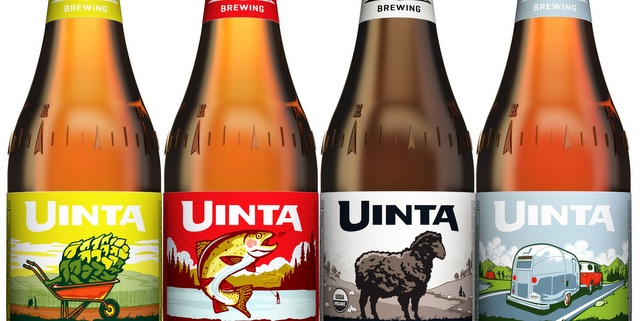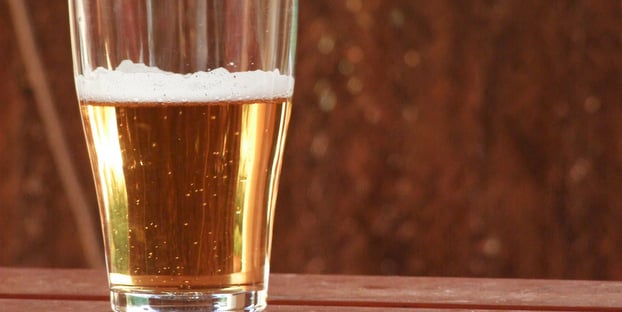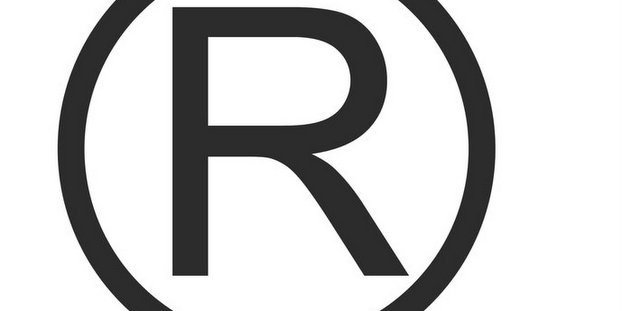
Hopefully you carefully read the first three parts of our look at craft brewing trademark selection and application (part 1 and part 2 and part 3) . But even if you did, took copious notes, committed it all to memory and executed it, you still may run the risk of rejection. That leads us to part IV.
So, you decided to file a trademark application for your latest and greatest beer. You ticked all of the little boxes, submitted a specimen perhaps, paid the appropriate fees and then you sat down and waited for six months. That six months is nerve racking.
Well, first off, everything at the Trademark Office runs on a six-month cycle, so the wait is nothing to worry over. But when you do receive a response, there is a definite chance that your mark will be refused for some reason or another. After all, there is only about a quarter of a million distinct words in the English language and someone is bound to have used yours on a product at some point or another. It is bound to be a kind of good or service similar to the one you offer.
So, now what? The first, and most obvious, option is to choose another mark and begin again. But there are other options. In this article we shall walk you through the most basic. The first two issues deal with the application itself. These are DIY-ers and you can easily correct them yourselves.
DIY Issues
Disclaimers
The most common issue we see when craft breweries file their own marks involves disclaimers. We touched on disclaimers briefly in the last article, but the issue warrants a bit more discussion. Many trademarks involve more than a single word, and of those multiword marks, many use words that are not necessarily unique. For example, “ABC Brewing Company” has three components: ABC, Brewing and Company. But of those three words only the one, ABC, is unique to that company.
As consumers we instinctively know that there are many breweries with the words “Brewing Company” as part of their name, and accordingly, it makes sense that no one company is given exclusive rights to use of the phrase. In fact, at this writing, no less than 1,834 marks in the Trademark database include the word “brewing.” So, if your mark includes the phrase “brewing company,” “brewing” or something similar, then the trick is to disclaim those words from your mark. To disclaim the words is not to delete them, but simply to inform the Trademark Office that you do not claim them exclusively (which is helpful considering 1,834 people have already beat you to it). Once disclaimed, you own those words only as far as they are attached to your unique wording or “ABC Brewing Company” as a whole in our example. The most common word or words that require disclaimers include:
- Beer
- Ale or Ales
- Brewing
- Brewery
- Company or Co.
- Works
- Any style of beer (ie. Hefeweizen, Wheat, IPA, Pale, Brown, etc…)
- Colors (ie. red, white, blue, chartreuse)
The act of disclaiming is quite simple, when following the direction to “respond” to your office action, there will be a list of options available. One in particular will be a group that lists, among other things, “add a disclaimer.” Follow that link and type in any words within your mark that you acknowledge the right of others to use as long as it is sufficiently dissimilar to your mark as a whole (so, in our example, “Brewing Company”).
Supplemental Register
The second most common issue that we see brewers run into is a need to amend to the supplemental register. This is usually because the proposed mark is deemed on the cusp of uniqueness. Generally, the examining attorney decides the mark is descriptive but might become a good indicator of source regardless if given a little time. And that time should be spent on the Supplemental Register.
The Supplemental Register does not provide quite as many rights as the Principal Register but does still provide a good level of protection. Most importantly, this is an easy fix that you are better off taking care of yourself as it is, to be frank, the simple act of clicking a box on the USPTO website. The office action itself will contain instructions about how to amend the application and where to go to find that nifty clickable box.
The moral of the story in this particular case is to not be intimidated by the office action in and of itself. You can always call or e-mail the examining attorney that issued the office action for simple assistance. They are actually rather friendly on the whole and usually happy to help. The best part is that the simple advice you receive from the examining attorney is free, while the assistance of an attorney hired to represent you (or in this case, click a box) is not.
Amending to the Supplemental Register can also be used if you do not think fighting the good fight will win out in the end for a few of the issues that we will discuss below, specifically for marks that are found to be merely descriptive, primarily and merely a surname, or geographic.
Rejections of the mark
Now for the second set of issues — those that deal with the mark itself. To begin, if you receive a rejection on the below grounds and would like to fight the good fight, then you are entitled to file a response disagreeing with the examining attorney’s decision. Note that the further you get down this rabbit hole, the more technical the process becomes and, therefore, taking on an attorney becomes an increasingly attractive option. This is because the office action response needs to be done not only with a good deal of tact (be forewarned that the same examining attorney that reviewed your application the first time will be reviewing your arguments this time, so do not badmouth “the dummy who refused your mark the first time” by any means), but with references and citations to earlier USPTO and court decisions on the matter as well.
Furthermore, those citations are expected to be in a particular format known as bluebook-ing that constitutes, for all intents and purposes, a yearlong class in law school. Trust me when I say that it is trickier than it sounds. That being said, below is a brief outline of the most common rejections we see.
Likelihood of confusion
A likelihood of confusion refusal, or Section 2(d) refusal as the examining attorney referred to it as, is by far the most common reason for receiving a rejection from the Trademark Office. As discussed in part two of our trademark series here at Craft Brewing Business, we noted that when clearing a possible mark you should look not only to whether other beers or breweries are using a similar name but also whether wines, spirits, teas, as well as bars and restaurants are using a similar name. That is because when deciding whether they will approve a particular mark for a beer or a brewery, the examining attorney also looks to whether wines, spirits, teas or bars and restaurants are using a similar name.
Wine has enjoyed a thriving industry far longer than our beloved craft beer. It makes sense then that the Trademark Office is brimming with trademarks registered to wines. And, for better or worse, examining attorneys tend not to distinguish between types of alcohol. Therefore, if a wine has registered ABC Vineyards and you would like to register ABC Brewing Company, the examining attorney will likely conclude that consumers will be confused about whether or not the winery and the brewing company are related somehow. Long story short: rejected.
That scenario usually seems fair to most people, but what if a wine has registered Blue Light Vineyards and you would like to register Green Light Brewing Company? Different story? Perhaps, but perhaps not. Unfortunately, there is no hard and fast rule with these issues as each examining attorney is a little different in the way they approach likelihood of confusion.
In all, there are 13 factors that need to be variously addressed when examining a likelihood of confusion between two marks. While the examining attorney will tell you which factors they find most important in the response letter, we frequently find that there other factors that are the most relevant. With some gentle nudging, sometimes the examining attorney comes round and approves the mark.
Alternatively, if you have a unique logo, you may be able to file your mark as a stylized mark and gain approval that way. In that case, you will need to use the mark exactly as it is submitted every single time it is used. Design marks can be a great asset to your company branding, so by no means is this a bad thing, but it does provide slightly less protection.
Merely descriptive
Another common rejection is that the mark is “merely descriptive.” Trademark law prohibits the registration of a mark that is nothing more than a description of an ingredient, quality, characteristic, function, feature, purpose or use of the goods or services being offered. Any attempt to trademark simply “IPA” for an IPA or “Stout” for a stout, for example, would be denied as merely descriptive of the good being offered. Similarly, “Hoppy” standing alone on beer would simply describe a characteristic of the product and would be denied accordingly. This is a good thing because it leaves the words IPA and stout available to anyone who makes those types of products and enables important communication with consumers.
The key here is that the rule only bars registration of a term that is merely descriptive. In other words, if a mark is descriptive and a reference to something else, then you stand a chance at success. In order to prove that a mark is not merely descriptive, you need to show evidence that the public understands the word or phrase as something else in addition to the beer reference. Evidence from any competent source, such as consumer surveys, dictionaries, newspapers and other publications is allowed and should be utilized accordingly.
Primarily merely a surname
Though not as frequent, the surname issue has come up many a time. The Trademark Office does not allow anyone to register a word that has the look and feel of a surname more than anything else. Consider the name Smith. If surnames could be trademarked, Smith would have been claimed long ago and then others, in simply signing their own name, could be sued for infringement. That seems like an exaggeration to be sure, but the slippery slope always starts somewhere.
However, like with the descriptive issue discussed above, the rule is about marks that are primarily and merely a surname. Therefore, if your mark looks like a surname AND something else, you should still be able to register the mark. Our office is a perfect example.
Compare and consider:
Stacy A. Hostetter, our capable associate, decides to trademark “Hostetter Brew Co.”
Candace L. Moon, our fearless leader, decides to trademark “Moon Brew Co.”
Hostetter does not mean anything in particular in English, therefore it primarily has the look and feel of a surname and the Trademark Office will likely deny it accordingly. Even if, for argument’s sake, “Hostetter” is also an archaic word that means “hilltop,” the primary way the public is likely to interpret the word is as someone’s last name and hence the mark will still be denied. “Moon” on the other hand, though it is a surname as well, will likely be recognized by the public primarily as a reference to the moon in the night sky. Accordingly, “Moon Brew Co.” could be trademarked.
Note that if Candace Moon attempted to trademark “Hostetter Brew Co.,” the mark would still be denied despite the fact that it is not her surname. The significant inquiry is whether the word feels like a surname, not whether it actually is someone’s surname. While these examples are fairly straightforward, there is quite a bit of middle ground. The trick is to find the most recognizable meaning of the word that is not a surname and show as much evidence as you can that the public will recognize that other meaning in addition to its status as a surname.
Geographic
The final common refusal we will address is geographic. The examining attorney will refuse registration of a mark as primarily geographically descriptive if the primary significance of the mark is geographic and purchasers are likely to think that the goods or services originate in the geographic place identified. The logic behind this is that consumers are entitled to know where products come from. If one person could trademark New York Brewery, then other breweries would be prohibited from telling their consumers that they too are New York breweries even when it was true. This one can be tricky, but the basic argument is what we have been addressing above as the rule is concerned with primary significance.
For example, there is a neighborhood called “China Town” in almost every major city in the United States. “China Town Brew Co.” then, theoretically anyways, would not necessarily be recognized by consumers as a specific China Town and the public is therefore not likely to assume the goods originate from a specific geographic location. This argument, admittedly, does not always work but can be worth a shot if you are truly committed to the chosen mark.
As a last ditch effort, if you do not think the good fight will win out in the end, and you are in use across state lines (not merely an intent to use), then you can amend to the Supplemental Register like we referenced earlier. Barring that, once arguments have been put together in a polite and organized document with evidence and citations properly attached, we once again sit down and wait. The six-month cycle will begin again, so kick up your feet with a cold one and fret not, fearless brewer. Technically speaking, the decision reached after this process will be deemed “final.” But even then, the game may not be up. That being said, if you are refused a “final” time, the rabbit hole should really only be traveled with legal counsel at your side.
 Candace L. Moon is a San Diego-based attorney who has spent the last four years dedicating her law practice to the craft beer industry. She has worked with over 100 craft breweries and craft breweries-in-planning nationwide, handling business entity formation, alcoholic beverage law, contract review, trademark law, as well as other legal needs. Her clients range from Green Flash and Drake’s to Jamil Zainasheff’s Heretic Brewing. Moon’s undergraduate degree is from the University of Virginia and her juris doctorate is from Thomas Jefferson School of Law in San Diego, Calif. She has been a member of the California State Bar since 2008 and the Brewer’s Association since 2009. Contact her at [email protected]; her website, www.CraftBeerAttorney.com; or her Twitter account, CraftBeerAttny.
Candace L. Moon is a San Diego-based attorney who has spent the last four years dedicating her law practice to the craft beer industry. She has worked with over 100 craft breweries and craft breweries-in-planning nationwide, handling business entity formation, alcoholic beverage law, contract review, trademark law, as well as other legal needs. Her clients range from Green Flash and Drake’s to Jamil Zainasheff’s Heretic Brewing. Moon’s undergraduate degree is from the University of Virginia and her juris doctorate is from Thomas Jefferson School of Law in San Diego, Calif. She has been a member of the California State Bar since 2008 and the Brewer’s Association since 2009. Contact her at [email protected]; her website, www.CraftBeerAttorney.com; or her Twitter account, CraftBeerAttny.





RT @CrowdBrewed: Common craft beer trademark rejections, and how to respond http://t.co/e36AyD3h6e #craftbeer #trademark #legal #beer http:…
Common craft beer trademark rejections, and how to respond http://t.co/e36AyD3h6e #craftbeer #trademark #legal #beer http://t.co/kvHS3nzwC9
RT @CraftBeerAttny: What are your options if the Trademark Office rejects your application? http://t.co/8vxSxx80WU
What are your options if the Trademark Office rejects your application? http://t.co/8vxSxx80WU
How to Respond to Common Craft Beer Trademark Rejections http://t.co/bpuH4OA1t7
RT @BrewandCovered: So, you decided to file a trademark application for your latest and greatest beer… http://t.co/G1sJskwH1A
RT @CraftBrewingBiz: So your craft beer trademark was rejected. Now what? http://t.co/arcnXcjeQn #sundayreading from @CraftBeerAttny
RT @CraftBrewingBiz: So your craft beer trademark was rejected. Now what? http://t.co/arcnXcjeQn #sundayreading from @CraftBeerAttny
RT @CraftBrewingBiz: So your craft beer trademark was rejected. Now what? http://t.co/arcnXcjeQn #sundayreading from @CraftBeerAttny
RT @CraftBrewingBiz: So your craft beer trademark was rejected. Now what? http://t.co/arcnXcjeQn #sundayreading from @CraftBeerAttny
RT @CraftBrewingBiz: So your craft beer trademark was rejected. Now what? http://t.co/arcnXcjeQn #sundayreading from @CraftBeerAttny
RT @rustysredrye23: “Common craft beer trademark rejections, and how to respond” http://t.co/tSr8NBRkBM
“Common craft beer trademark rejections, and how to respond” http://t.co/tSr8NBRkBM
Jones’ Farm- Home of Bad Bunny Hops liked this on Facebook.
So, you decided to file a trademark application for your latest and greatest beer… http://t.co/G1sJskwH1A
David Lengvarsky liked this on Facebook.
RT @CraftBrewingBiz: Common craft beer trademark rejections and how to respond: http://t.co/arcnXcjeQn More great info from @CraftBeerAttny
RT @CraftBrewingBiz: Common craft beer trademark rejections and how to respond: http://t.co/arcnXcjeQn More great info from @CraftBeerAttny
RT @crsimp01: Common craft beer trademark rejections, and how to respond http://t.co/bbxVvQektx via @craftbrewingbiz
RT @CraftBrewingBiz: Common craft beer trademark rejections and how to respond: http://t.co/arcnXcjeQn More great info from @CraftBeerAttny
Common craft beer trademark rejections, and how to respond http://t.co/bbxVvQektx via @craftbrewingbiz
RT @CraftBrewingBiz: Common craft beer trademark rejections and how to respond: http://t.co/arcnXcjeQn More great info from @CraftBeerAttny